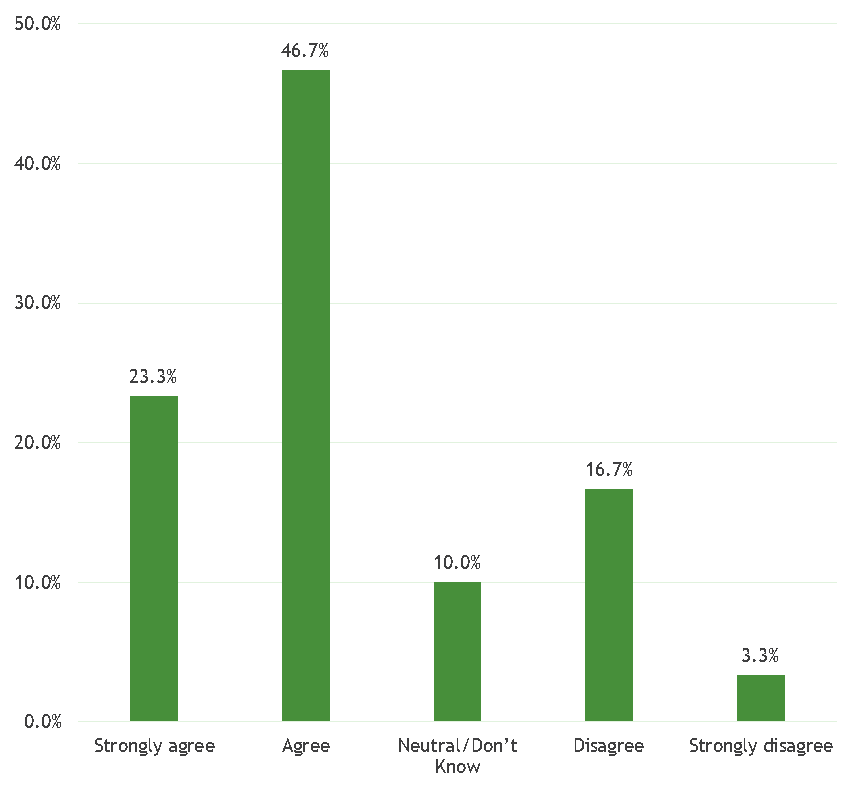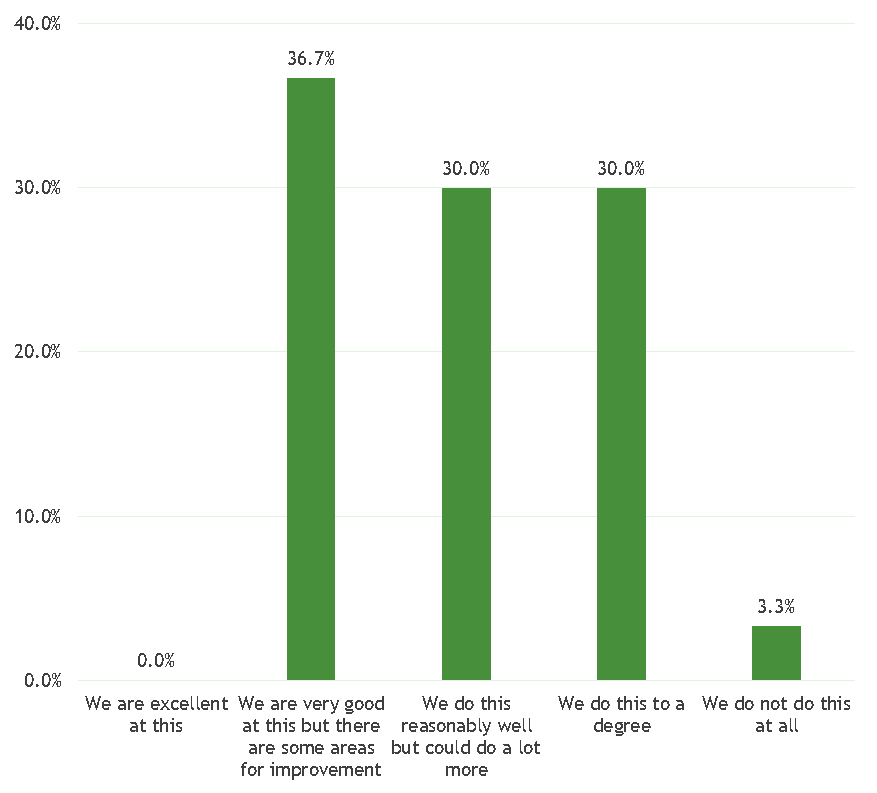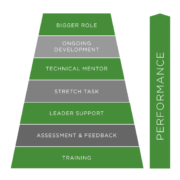Embedding new skills
In our company, Alan my fellow director, being more the technophile, takes the lead on the computer technology side – that’s domain names, website, twitter, etc.
Why am I relating this to you? Well twice already Alan has shown me how to update the website and upload articles, but here I am again with an amendment ready to go and I can’t figure out, as six months have passed since I was last shown, how to do it. So again Alan will have to show me or do it for me!
Beyond me feeling stupid and Alan probably frustrated, what has happened here and why have I not been able to retain the knowledge and use a skill previously learned?
Simply, the new skill or knowledge has not been “embedded” – that is practised and used regularly and frequently since the lesson. Most people are not good at retaining information and techniques if they don’t practise using them, and what’s more that learning is embedded best when the individual is being stretched and challenged in using the new skill or knowledge – a bit of pressure really helps the focus on capturing and retaining learning.
Another example, away from business and insurance this time. Three years ago I taught my then 17 year old daughter how to drive. Well in truth I tried to teach her two things – how to drive and how to pass the driving test. After she had mastered the basics I set about teaching her to parallel park – that hated manoeuvre of reversing into a gap between two cars to park at the side of a road. The first lesson on this involved me showing her how to do it and then coaching her on the manoeuvre from the passenger seat – a full hour on this one operation, over and over again. Then every time we went out in the car for a lesson she did at least two parallel parks. On the morning of her driving test – again two parallel parks before she went in. And it worked she passed her test first time and did a perfect parallel parking manoeuvre. Successful embedding! …….or perhaps not – two weeks ago after she’s been driving for 3 years she admitted to me that since the test she has never once parallel parked and wouldn’t attempt one now because she couldn’t remember how to do it and didn’t have the confidence to try!
The issue of Embedding and these two examples came to mind when I reviewed the results for the recent MAPtraining research survey on “The organisational capability in the insurance market to drive the development of technical excellence” (for copy of full survey report please send an email to enquiries@maptraining.co.uk).
The responses in particular to the two following statements are the ones that interest me on embedding:-
- When delegates are selected for development programmes, their line manager/leader is always required to be involved pre and post training programme and has a clear responsibility to support their delegate’s ongoing development.

- Following attendance at a training programme, are individuals given the opportunity to use their newly acquired skills back on the job and are they encouraged to move on to do different job roles or bigger roles within the organisation.

Statement 1 received one of the highest overall ratings driven by 70% of respondents agreeing/strongly agreeing that line managers are always required to be involved with their delegates’ training programmes and have clear responsibility to support their ongoing development. This demonstration of support is a very positive factor to helping to get a return on training investment – with leader support delegates are more likely to see the training itself as just one step in their development journey and continue to look for areas to use their newly acquired skills/knowledge in their day to day role. In those organisations represented by the one in five respondents who disagreed/strongly disagreed with the statement, there is likely to be a rapid loss of return on the training investment and potential dis-engagement from the delegate.
Despite this favourable manager commitment/support, responses to Statement 2 with its lower levels of agreement (63% chose answers indicating need for improvement) demonstrates organisations could improve in the provision of opportunities for trainees to use their new skills. What is more, doubt is shown regarding encouragement to do a different role or bigger role within the organisation.
In summary this to me identifies a gap between good manager commitment/support for training and the delivery of opportunities for trainees to embed their learning.
A Global Insurer’s Head of Learning and Development explained it to us recently:-
“I see too much decay – that is the loss of value from training when it is not embedded and supported by wider development”.
Put another way, as we invest in technical insurance training should we be asking ourselves some tougher questions:-
- Why are companies in insurance achieving good involvement and commitment of managers to the development of their staff but then not ensuring individuals are given the opportunity to use those newly acquired skills and knowledge back on the job?
- Are companies failing to link training and the embedding of newly acquired skills to succession planning and stretching individuals in wider or bigger roles?
- Are managers “ticking the box” on training without committing to genuine learning?
- Does the full throttle performance culture of today where every manager is judged on their own team’s performance, encourage managers to be consciously or sub-consciously defensive towards their key performers, seeking to retain them for their own team?
- Have we come to see formal training as a replacement for (rather than in addition to) informal, regular and repetitive at-the-desk learning?
- Has the recent training emphasis on self-learning and specifically self-responsibility for learning and development obscured the need also for manager/leader commitment to achieve the stretch in existing role or stretch in new role to embed learning?
- Is there enough guidance for managers and involvement and buy-in – when it is those managers that bear the cost (loss of delegates work time, moving on of best staff, etc.)?
The MAPtraining survey research could not pursue such secondary questioning and in trying to explain such features as the suggested gap in embedding we enter the realms of speculation, but nonetheless if insight is achieved and attention focussed on embedding by asking these questions, a step forward will result.
Turning to a positive example or potential role model for embedding from a client – we are currently working with a global insurer in designing a foundation skills programme for underwriters where there is a real focus on the engagement piece and on embedding the learning – in effect implementation of an explicit Embedding Programme encompassing:-
- activity for application to the day job
- structured support from the delegate’s leader
- coaching/mentoring
- further study
- production of guidance note for managers on embedding (a minimum required standard).
In conclusion the message from the MAPtraining survey, from my personal examples on technology and learning to drive, from individual market leaders and from our enlightened client is absolutely clear – learning of new skills and knowledge is only effective and adds value for both the individual and the organisation if those new skills and knowledge are embedded. That embedding can start during the training (practice, case studies, tests of learning, etc.) but most importantly must happen after the training, back on the job. Finally we should not overlook the crucial importance of the trainee’s manager’s commitment (and dare I say the full and real commitment) in order to achieve the stretch in existing role or in a new role, to embed the learning.











Leave a Reply
Want to join the discussion?Feel free to contribute!